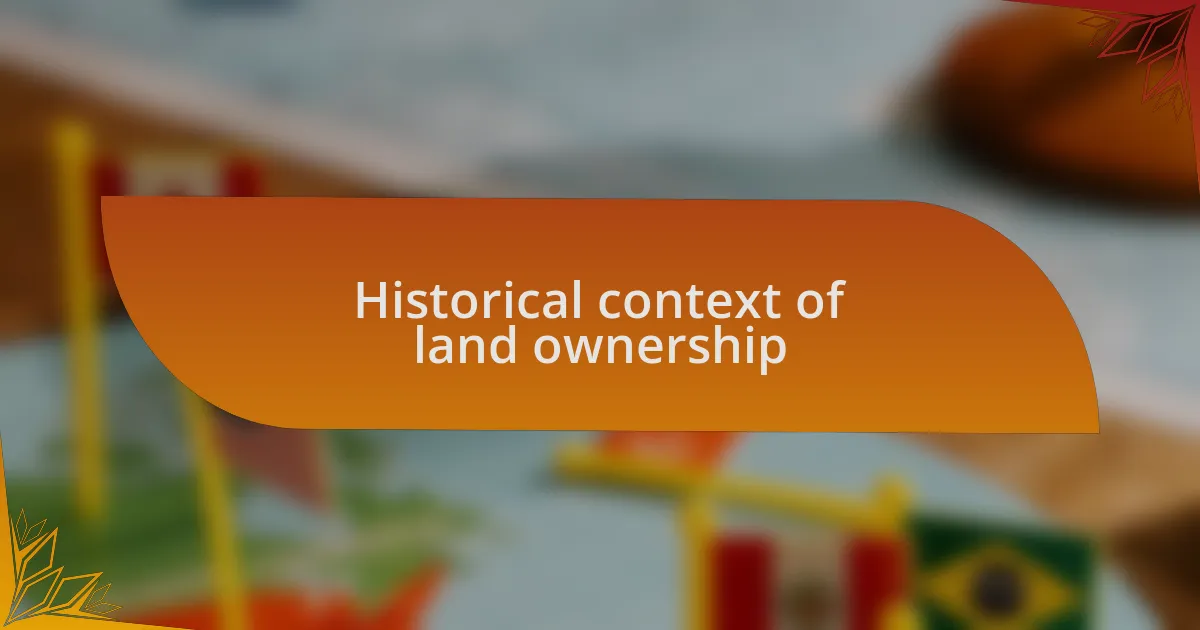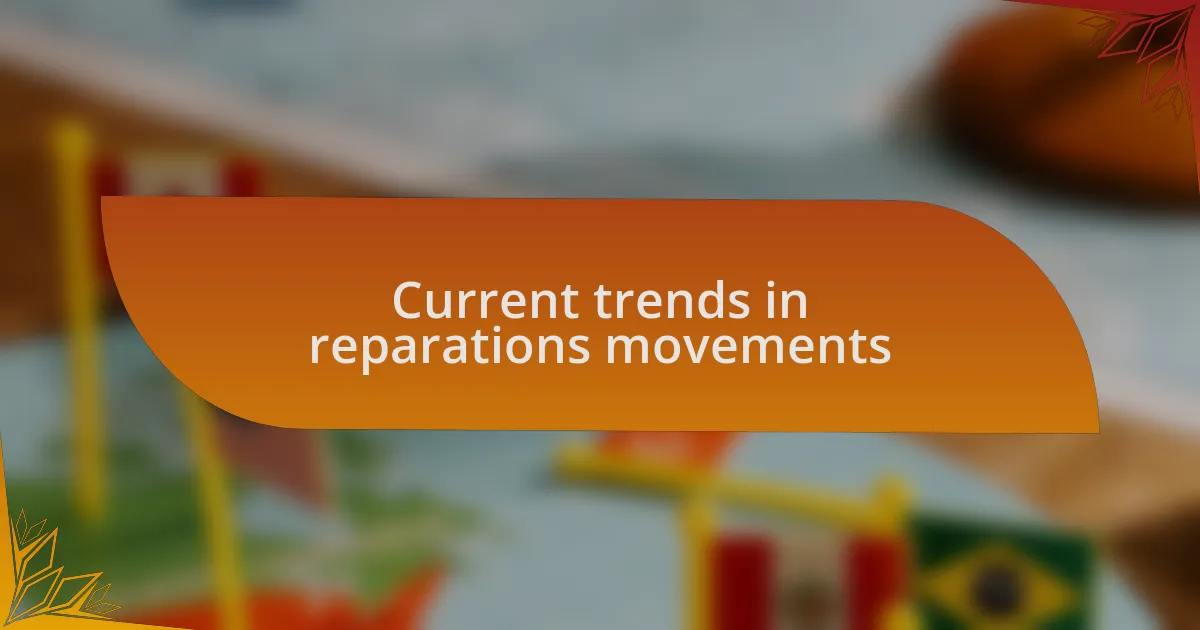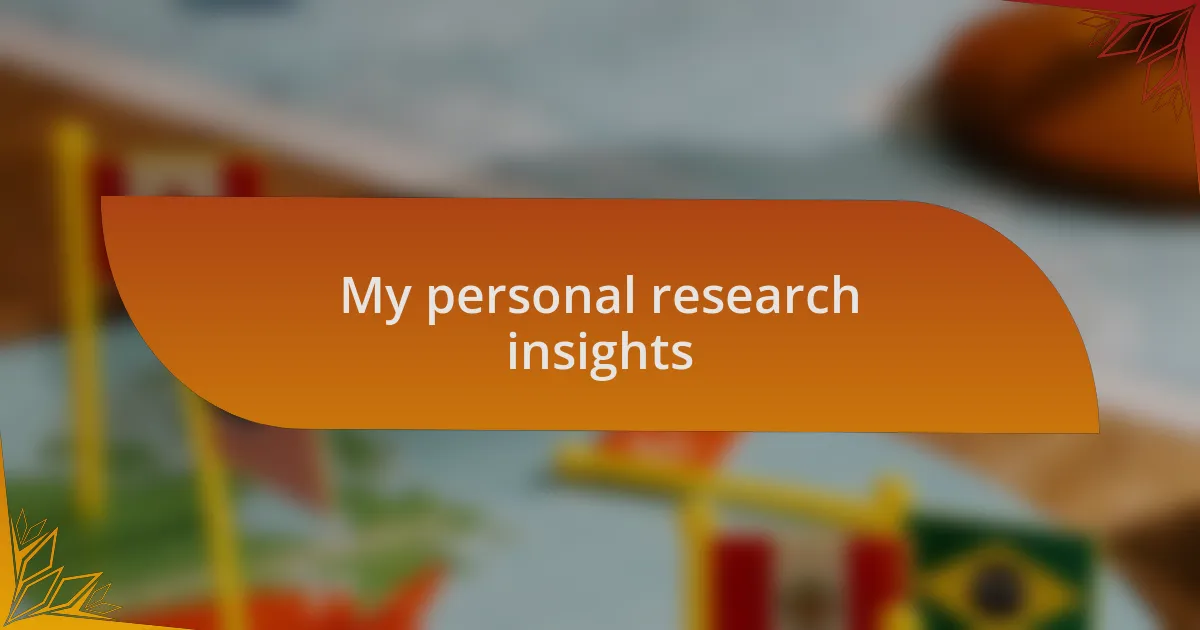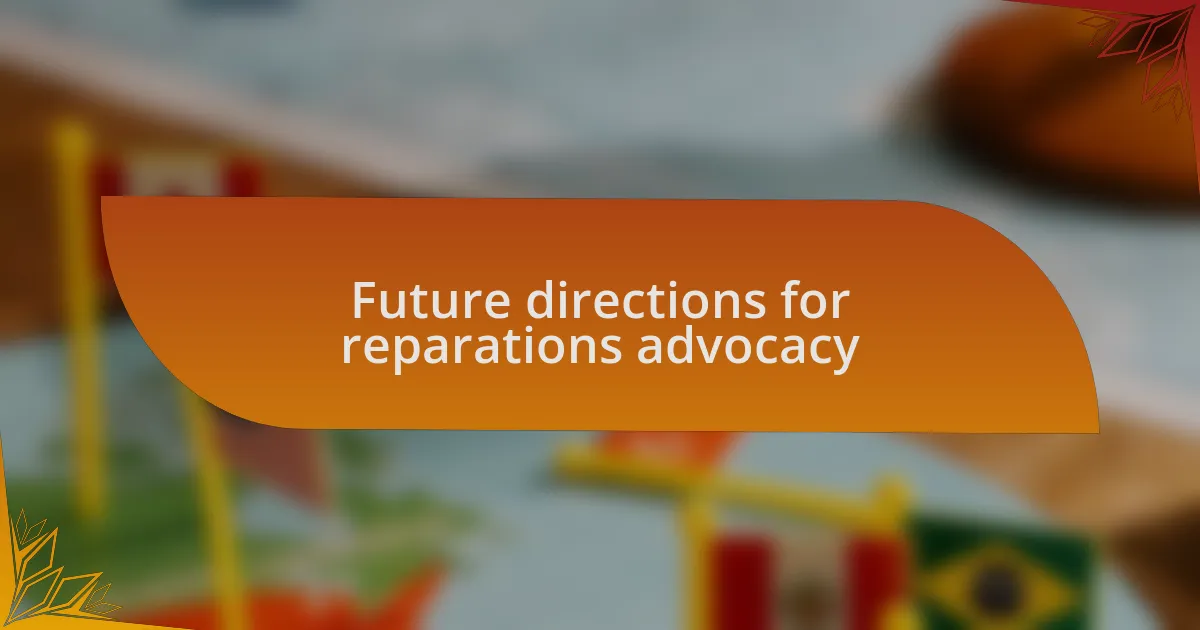Key takeaways:
- Reparations involve more than financial compensation; they necessitate an honest dialogue about historical injustices and their ongoing impact on communities.
- Racial land ownership history reveals systemic barriers faced by marginalized groups, which continue to affect wealth and identity today.
- Current reparations movements are gaining traction through grassroots advocacy, aiming for comprehensive policy reforms and funding models based on wealth redistribution.
- Future advocacy should integrate land restitution within broader economic justice discussions while promoting education and engagement with policymakers for sustainable change.

Introduction to reparations politics
Reparations politics is a deeply complex and nuanced arena that encompasses issues of justice, equity, and historical accountability. Growing up, I often pondered the legacy of my ancestors and how their struggles have shaped my present reality. Isn’t it time we confront these historical injustices and acknowledge the vast disparities that continue to divide communities today?
As discussions around racial land ownership emerge within this political landscape, I can’t help but feel a sense of urgency. I recall a community meeting I attended where residents shared their stories of generational displacement and loss of land. These narratives aren’t just statistics; they’re voices that demand recognition and responsiveness in our policies.
The conversations surrounding reparations often evoke strong emotions—feelings of anger, hope, and, at times, confusion about the path forward. It’s clear that reparations are not merely about monetary compensation; they represent a commitment to repairing ties and rebuilding trust. How can we truly honor the sacrifices of those before us without an honest dialogue about the past?

Understanding racial land ownership
Understanding racial land ownership brings to light the historical injustices that have led to significant disparities in property rights. I remember visiting a friend’s family farm, passed down for generations, where every tree and field told a story of resilience. In contrast, many Black families across the country have faced systemic barriers that stripped them of their land, echoing deep-rooted inequities that have persisted for over a century.
As I reflected on these disparities, I was struck by a story I read about the land grabs during the Jim Crow era, where discriminatory practices forcibly displaced families from their homes. It’s painful to think about the lost heritage and community bonds severed by policies that favored one group over another. How can we begin to mend such wounds without acknowledging the foundational role of land ownership in wealth accumulation and social standing?
When we think about racial land ownership today, we must ask ourselves: what does ownership truly mean in a society where that concept has historically excluded entire communities? I believe it is crucial to confront these uncomfortable truths. Acknowledging these injustices is the first step toward restoring dignity to those affected and rebuilding a more equitable future.

Historical context of land ownership
Land ownership has a complicated history, deeply entwined with racial dynamics in the U.S. I recall reading about the Homestead Act of 1862, which was intended to provide opportunities for many but disproportionately benefited white settlers while systematically excluding Black Americans and Indigenous peoples. It’s alarming how government policies created an uneven playing field, allowing some to thrive while others were left behind.
The legacy of redlining further exemplifies this disparity. I find it heartbreaking to see neighborhoods still haunted by these historical injustices. Homes were denied to families based solely on their race, trapping them in cycles of poverty and disenfranchisement. How can we celebrate progress when the scars of such discrimination still impact communities today?
When discussing land ownership historically, it’s vital to remember that it was often tied to one’s identity and worth. I think about how, for many, land represented not only a means of survival but a place to build a future. Reflecting on this, one must wonder: what would our societal landscape look like if everyone had equal access to land and the opportunities it brings?

Current trends in reparations movements
Current trends in reparations movements are increasingly focusing on policy reforms that directly address historical injustices related to land ownership. I’ve witnessed growing discussions in communities about implementing comprehensive land equity initiatives, which aim to reverse some of the effects of past discriminatory practices. Are we finally ready to confront our history and take actionable steps toward equity?
Additionally, grassroots movements are gaining traction, where individuals and organizations advocate for reparations through local legislation and community-based reparative measures. I remember attending a forum where activists shared stories of land loss and cultural disconnection, emphasizing how emotional and psychological impacts continue to resonate today. How can we ignore the voices of those directly affected by systemic inequity?
There’s also an emerging conversation about funding reparations through wealth redistribution models, particularly involving businesses that have profited from racial discrimination. I find it encouraging that more people are seeing reparations not just as a moral obligation, but as a necessary investment in our shared future. But I can’t help but ask: what would true reparative justice look like, and how can we ensure that it’s effectively implemented and not just symbolic?

My personal research insights
In my exploration of racial land ownership, I’ve uncovered the stark realities minorities face when it comes to property rights. Visiting a neighborhood where I grew up, I was struck by how many families had lost their homes through inequitable practices. It made me wonder: how many dreams were shattered alongside those foreclosed doors?
Delving deeper, I came across local histories that highlighted the connection between land ownership and community wealth. It was eye-opening to read about families who possessed lands for generations only to be forcibly removed. This makes me question the foundational narratives we hold—what if the land records could tell a different story of resilience rather than loss?
I also engaged with interviews from community elders whose wisdom highlighted an urgent need for restoration. Their memories speak of not just land but also heritage and identity, which were deeply tied to their ancestral properties. It leaves me pondering the complexity of restoring what was taken—how can one truly repay a legacy when the impact spans generations?

Future directions for reparations advocacy
Future directions for reparations advocacy must focus on integrating land restitution into broader discussions of economic justice. I recently attended a community forum where a young activist passionately discussed how reclaiming land could empower displaced families. It made me reflect: what if we viewed land ownership not just as a financial asset but as a crucial building block of community identity and stability?
As we push for reparations, I believe the conversation should also embrace education and awareness. I recall walking through neighborhoods where former landowners shared tales of their ancestors’ struggles. How many people know these histories? By fostering understanding through educational initiatives, we can cultivate empathy and support for reparations that go beyond monetary compensation.
Finally, engaging with policymakers to create legislative frameworks will be essential to sustain long-term impact. Through my research, I’ve seen the bureaucratic hurdles that hinder land reclamation efforts. What does it take to turn intention into action? It might require us to build coalitions that bring together diverse voices, ensuring that reparations advocacy remains a unified and powerful force for change.